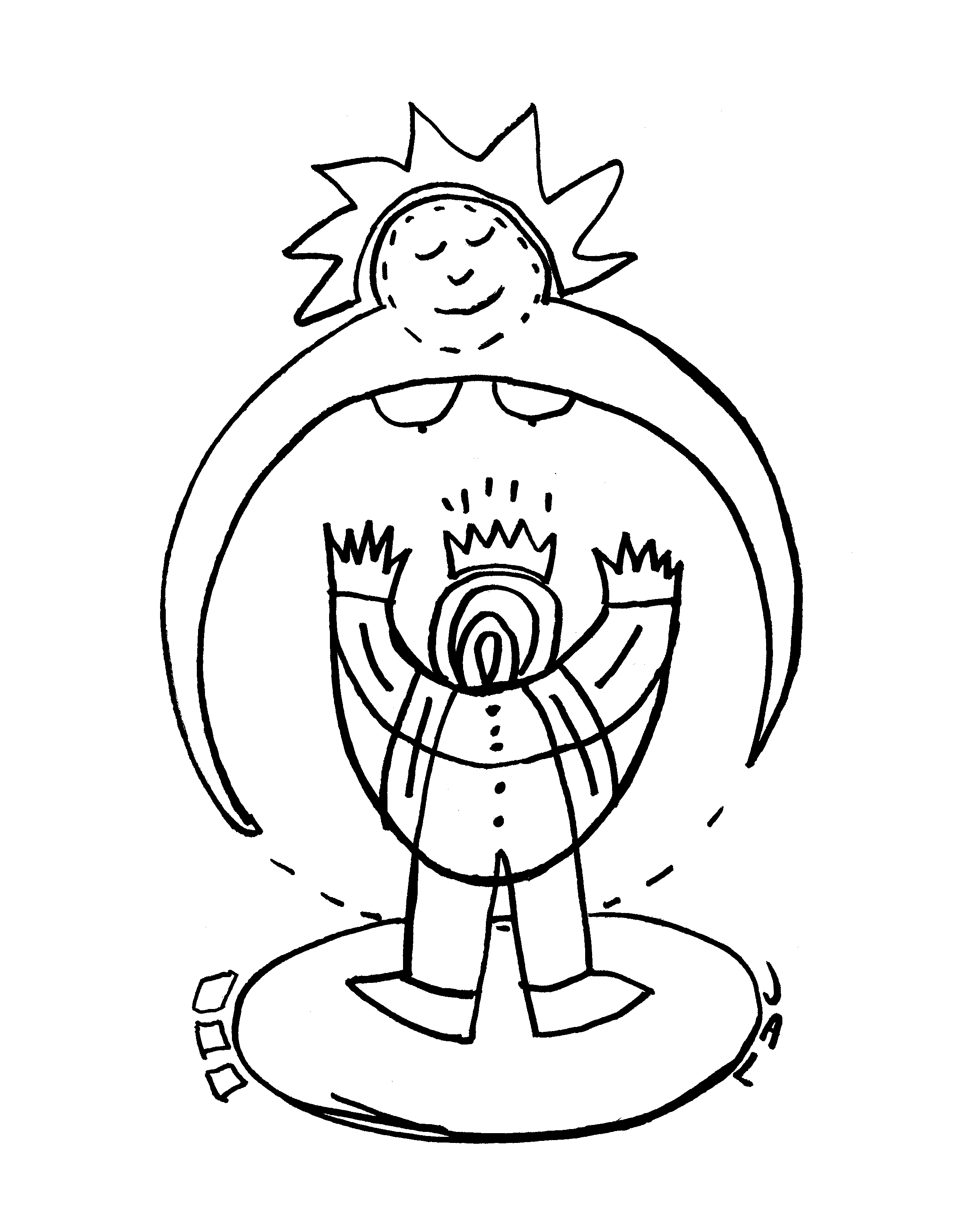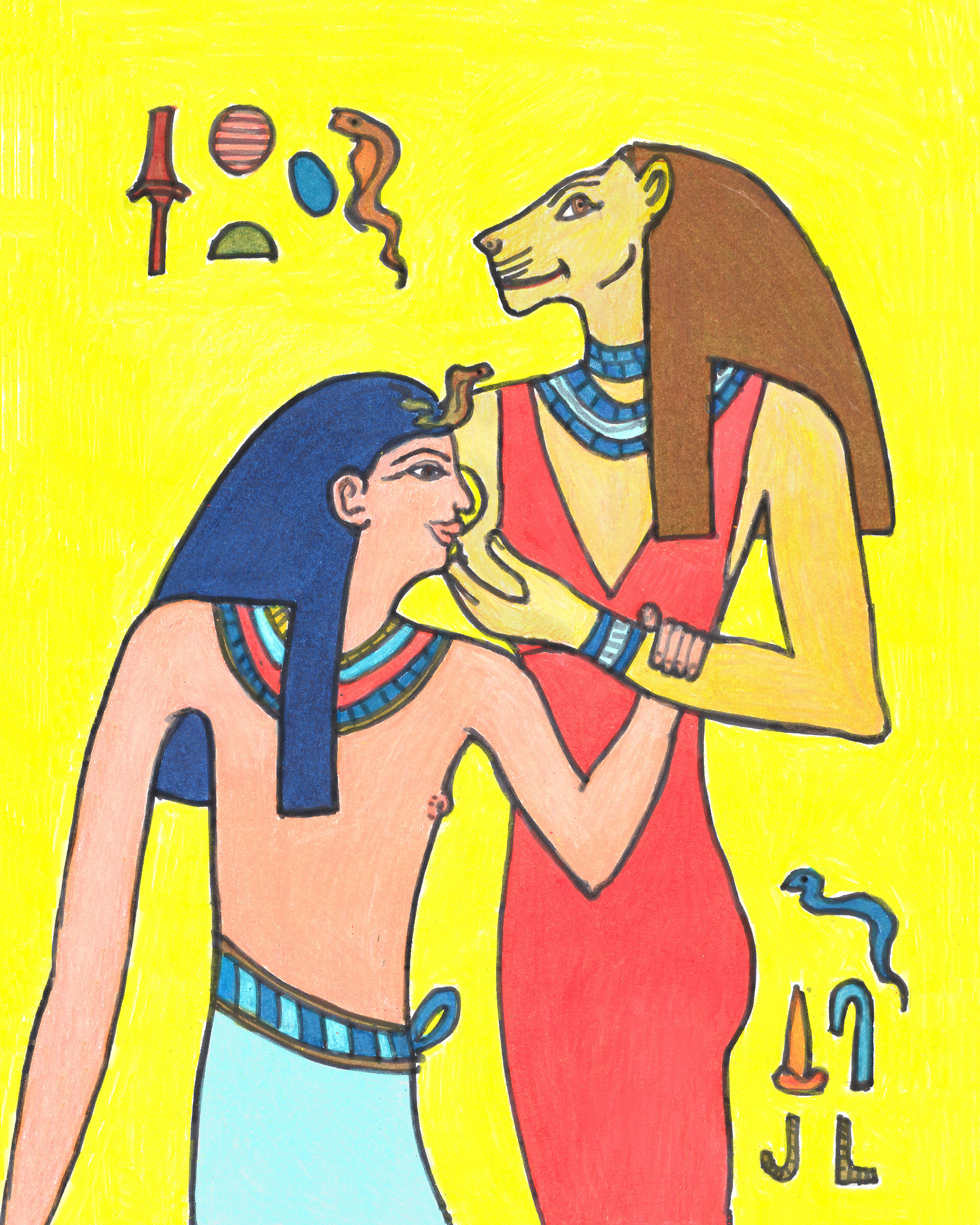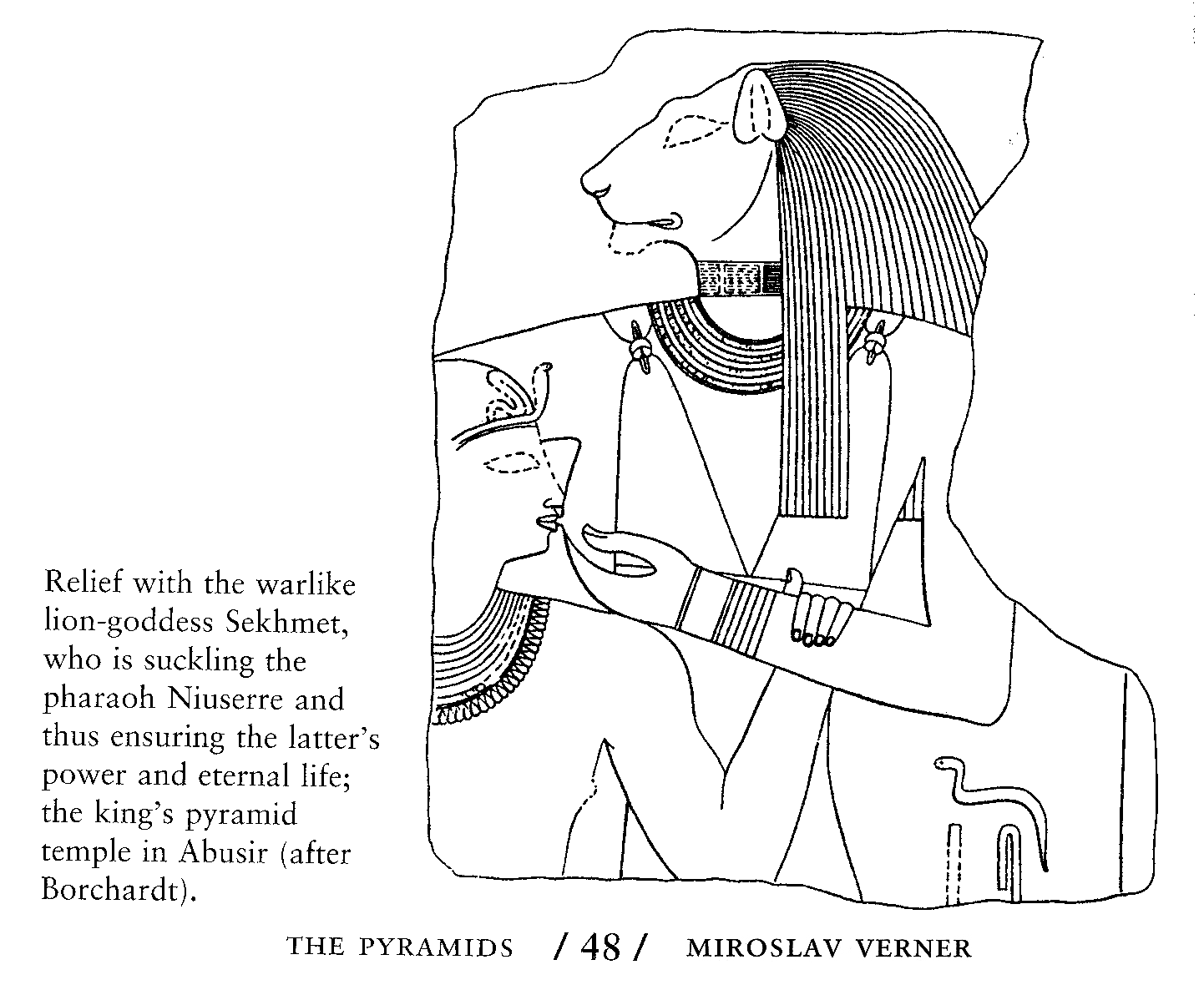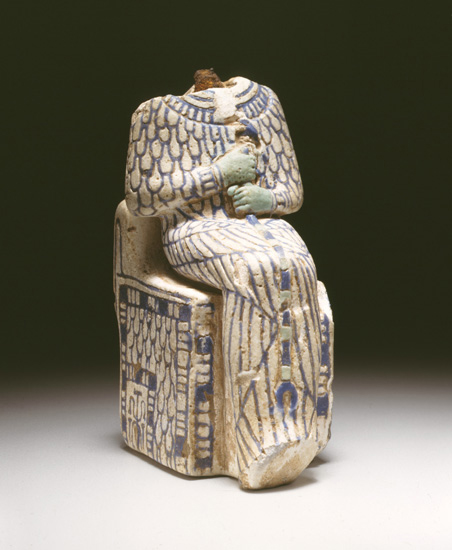|
I've been turning up Ptah sightings, as part of a hunt to learn the titles given to Ptah. My first go-to source, Complete Gods and Goddesses of Ancient Egypt, by Richard Wilkinson gives a few. "Honourific titles such as nefer-her 'merciful of face' or neb-ma'at, 'lord of truth' are often given to the god in inscriptions, but epithets extolling the god as a hearer of prayers seem to have had particular significance. Many votive stelae have been found in the area of Ptah's temple at Memphis and elsewhere in Egypt carved with representations of human ears and dedicated to the god as mesedjer-sedjem, 'the ear which hears, who would hear the petitions of his devotees." (Page 124)
I've seen nefer-her translated in various ways. In addition to "merciful of face", I've seen "beautiful of face", "perfect of face", "fair of face", and "gracious of countenance".
I also saw this photo in Searching for Ancient Egypt: Art, Architecture and Artifacts, David Silverman, editor. It's such a lovely piece, except for that most distressing lack of a head:
The Penn Museum curator describes this. "Brilliantly colored and designed as part of a larger statue, this figurine was likely set up in a shrine or temple at Memphis. The god Ptah appears seated on a low-back throne, inscribed with the standard epithets or descriptions of the deity. Holding a was-scepter, formed from the hieroglyph meaning “dominion,” he wears a special feathered garment over his usual mummiform costume – a feature found on a few other representations of Ptah from the reigns of Amenhotep III and Tutankhamun. This small masterpiece attests to the skill of the workers in ancient faience workshops."
The book offers more info, "Two vertical columns on the dorsal pillar, broken at the top, can be reconstructed to read: '[Ptah, lord of truth], great of strength, [upon his great throne;, beneficent, he who gives birth to crafts.' These are standard epithets of Ptah, duplicated on contemporary petition stelae left by private individuals in his temple precinct at Memphis." (Searching for Ancient Egypt, page 48)
In addition to the feathered Ptah at Penn, the Leiden museum also has a faience feathered Ptah:
|
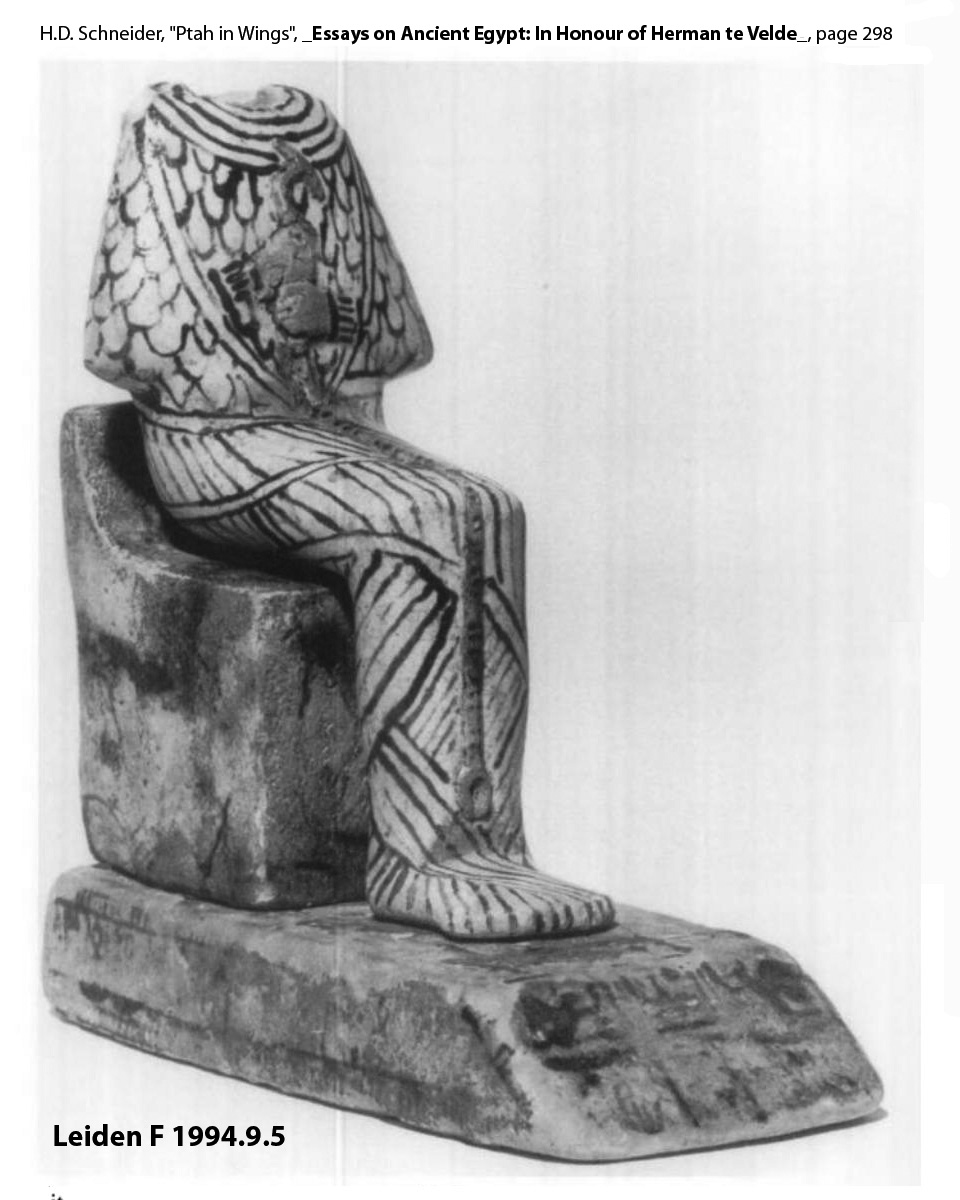
Leiden F 1994.9.5, H.D. Schneider, "Ptah in Wings", _Essays on Ancient Egypt: In Honour of Herman te Velde_
|
Sadly, still headless, but at least he's got his feet and the Ma'at plinth, or dais, which "is generally assumed to derive from the hieroglyph for ma'at, universal order. [... And] Ptah is rarely without it." (H.D. Schneider, "Ptah in Wings", _Essays on Ancient Egypt: In Honour of Herman te Velde_, edited by Jacobus Van Dijk, (STYX Publications, Groningen 1997) page 29)
Schneider says, "When compiling an iconographical interpretation of the manifestion of Ptah in wings, a scene in the tomb of Queen Tausert must not be omitted. This represention shows a standing figure of Ptah, called 'Lord of Ma'at, King of the Two Lands, Gracious of Countenance, He who is on (his) great Throne' in the accompanying inscription, being enveloped by the wings of the goddess Ma'at standing behind him. The pictorial and written material give rise to the assumption that the wings of the garment of the Leiden Ptah and of the Ptah figure in the burial equipment of Tutankhamun are none other than those of the goddess Ma'at. The winged garment is a materialization of the indissoluble cohesion between Ptah the Lord of Ma'at and this goddess." (Schneider, page 297)
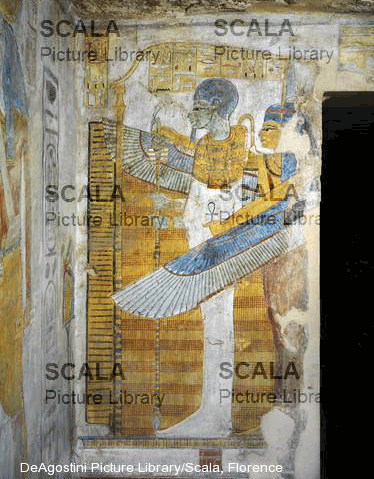
Scala gives a small view to this tomb scene
The feathers may relate to this embrace of the winged goddess Ma'at, but perhaps it demonstrates another sort of ma'at, aka 'balance':
As with Thoth, Ptah also has a Reconciling Reputation. "Horus and Seth 'were reconciled and united...their quarreling ceased...being joined in the House of Ptah...'" (from the Shabako Stone, quoted by Simson Najovits in "Egypt, Trunk of the Tree", (Algora Publishing, 2003), page 191)
"And so all the gods and their kas assembled together for him (the god Ptah). The Peaceful and Reconciling One (a name of Ptah) was lord of the two lands." (Memphite Theology as quoted by John Gwyn Griffiths in The Origins of Osiris and His Cult, (Brill, 1980), page 160)
As Ptah always clutches a Set-headed Was scepter, perhaps the feathers are alluding to the god Horus.
I've been wondering how Ptah's titles would be written in hieroglyphs, and fortunately, a linear drawing of a stela at the British museum has come to my aid:

British Museum #EA286, ©The Trustees of the British Museum, (I did fill in the spooky blank eyes, and this image is derived from a scan of it found in the Bierbrier book)
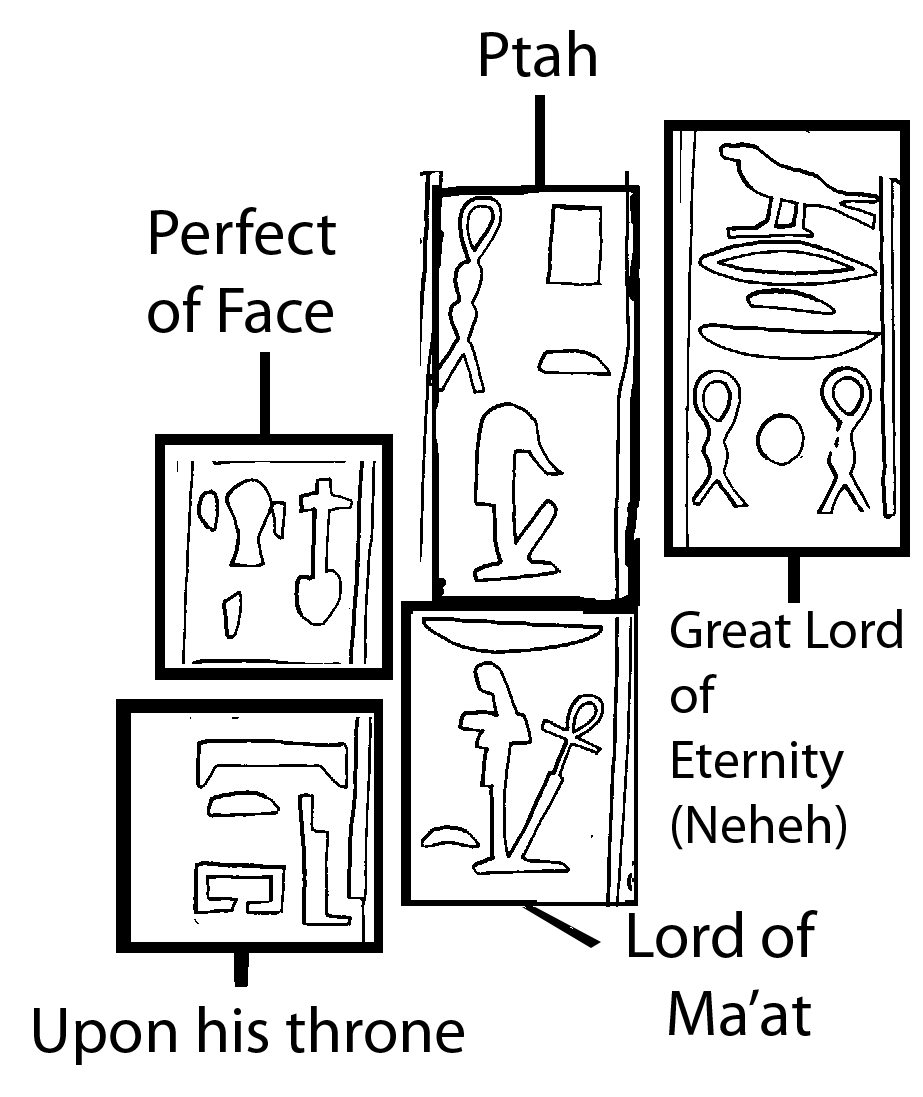
So far, I've got Ptah, Lord of Ma'at, Perfect of Face, Upon his Throne, Great Lord of Eternity.
|

